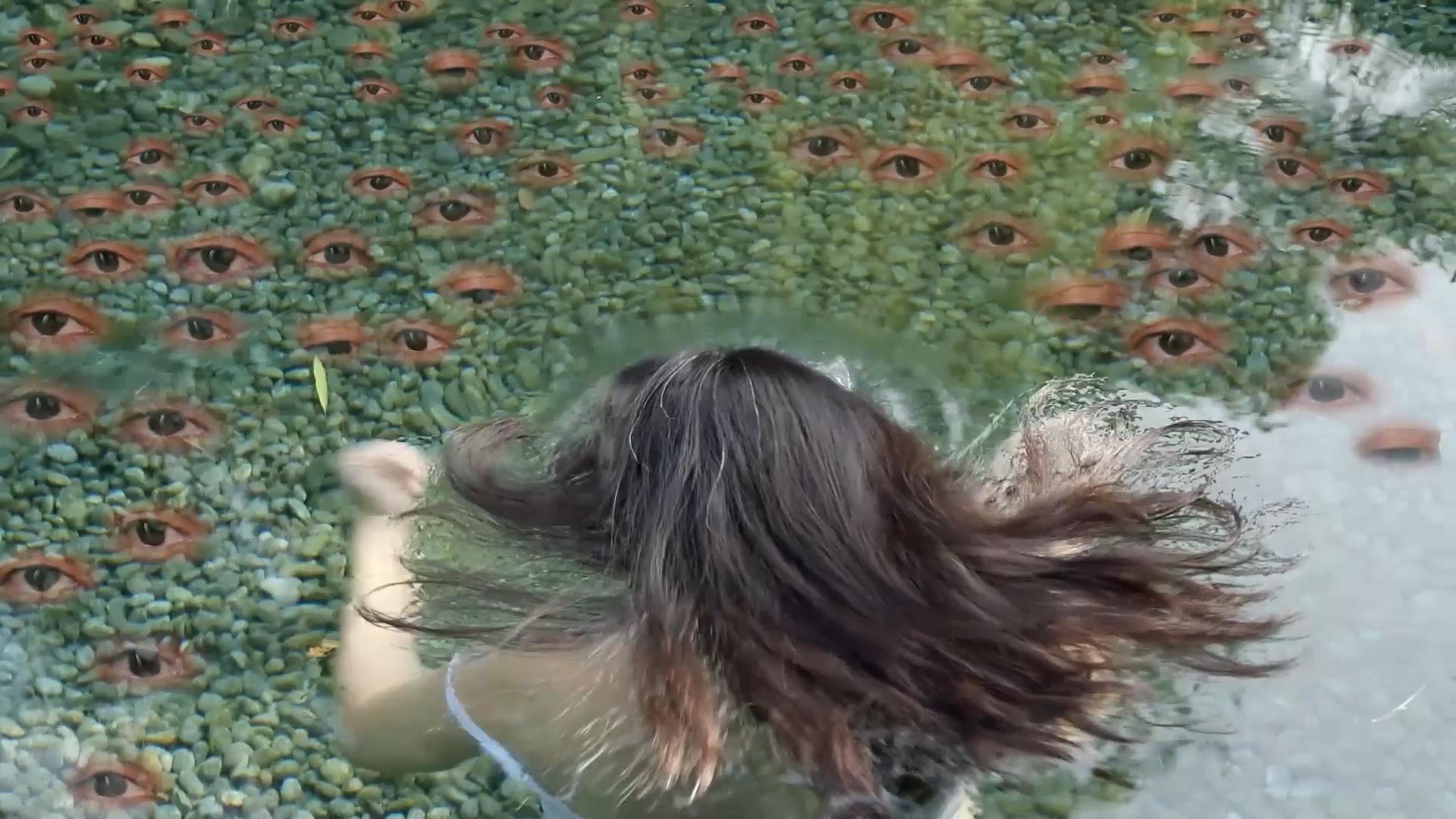Resonant Shells, Animated Bodies: Natasha Malik’s Film Experiments
Can one transform a painting from a still to a video? Natasha Malik’s experimental film The mirror gazed inward and caught a brief glimpse of another life in an illusion of infinite, in the eye of a dream. (2022) attempts to animate her painting a swim through time, concluded (2022). Malik’s chosen medium for most of her work is miniature painting, a form which allows her to engage with the female body, its imperfections, and the socio-cultural meanings associated with it. a swim through time, concluded depicts the elements of earth, fire and water alongside hands, which Malik uses to symbolise the human body. The attention to detail and the sharp technique employed in her miniature paintings are also present in the film. The artist's attempt to experiment with performance and animation is accompanied by an introspective background score composed by Faraz Aamer Khan.
Elements of nature appear and disappear with tender movement, juxtaposed with shots of Malik performing elaborate hand gestures, crouching and sitting. In one still, water moves softly underneath Malik's body while the artist's face is turned away, and we see an empty shell on her back. In a conversation with the author about the film, Malik referred to a quote from Maxime Alexandre’s La peau et les os (1956), which contains the visual references that informed the film:
My shadow forms a resonant shell
And the poet listens to his past
In the shell of his body's shadow.
The “shell” in nature is left over from a creature that has previously used it as a home. The creature has flown, or swum away, upon reaching a point of physical and psychological maturity or death. The shell not only represents an atmosphere of elements that humans treat as home and later abandon, but also a opens up a metaphorical space that lets the artist linger and introspect in her creative practice. The viewer is reminded of these two aspects and the longing for them as, ultimately, the shell is home.
The relationship between women, femininity and nature is one that is often evoked across literature and the arts. From Shakespeare’s Ophelia ruminating on flowers in her monologue and her death under water to Cuban-American artist Ana Mendieta’s “earth-body works” that embed earthly elements in/as silhouetted performances, there is arguably a synergy between the body and its surrender into “mother” nature. Virginia Woolf’s landmark experimental novel The Waves (1931) describes a surrender to water as dissolution:
"I see nothing. We may sink and settle on the waves. The sea will drum in my ears. The white petals will be darkened with sea water. They will float for a moment and then sink. Rolling over the waves will shoulder me under. Everything falls in a tremendous shower, dissolving me.”
Malik’s film ends with her body and all elements of nature around her dissolving or vanishing into thin air—surrendering.
To learn more about experimental filmmakers, read Ankan Kazi’s two-part essay on the practice of Nina Sugati SR and Sibi Sekar. Also read Sarah Kazmi’s poems on home, land and belonging.
All images are stills from The mirror gazed inward and caught a brief glimpse of another life in an illusion of infinite, in the eye of a dream. (2022) by Natasha Malik. Images courtesy of the artist.
Click on the image to view the album





